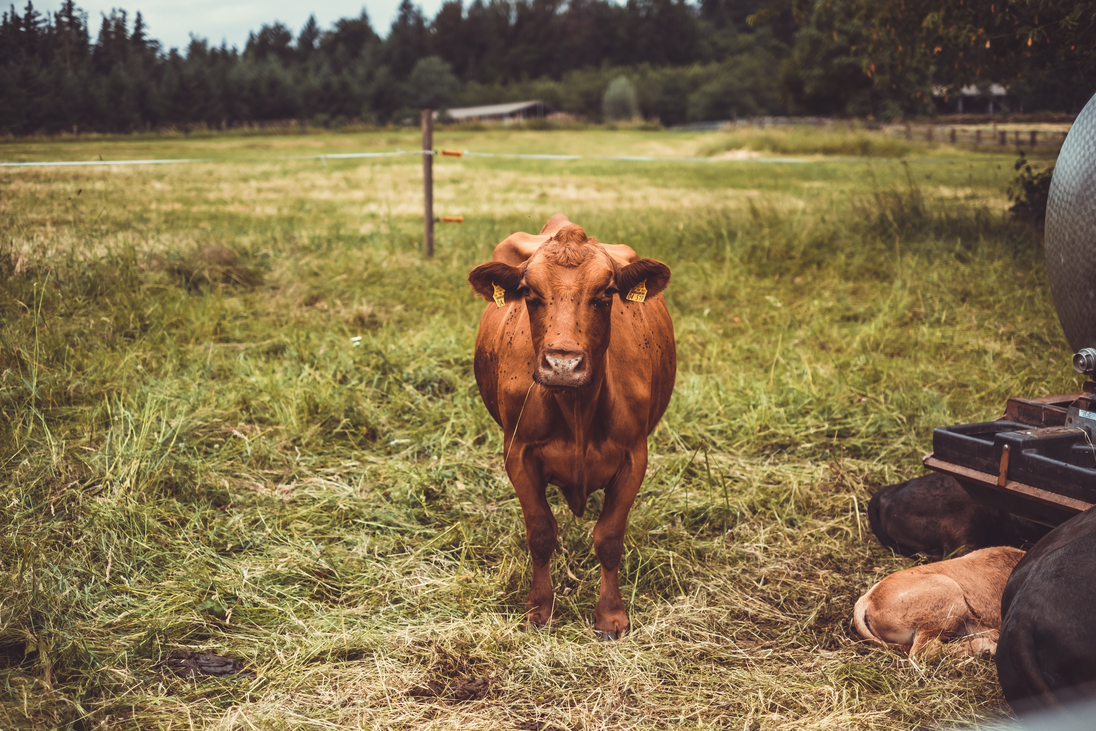
15 Mar Grass-Fed, Grass-Finished Beef vs. Conventional: The Smarter Choice
Grass-Fed, Grass-Finished Beef Vs. Conventionally Raised: The Smarter Choice
I often get asked why I might recommend a grass-fed and finished version of your favorite red meat dish. There are multiple reasons why, but I’d like to put my primary focus of this writing on the nutritional components. Let’s discuss why one version of beef could arguably be considered a healthy food and the other could be leading to systemic inflammation and chronic disease.
You’re probably asking the difference between grass-fed and conventional beef besides the apparent food source used to feed them. First and foremost, cows’ digestive systems are not made to eat primarily grains, which is an unnatural food source for them. It is even more harmful to let them graze on grass and then finish with grains or alternate back and forth, which puts the cow’s digestive system in distress. This has an immediate and harmful impact on the cow’s health from that standpoint. In conventional cattle, they are bulked up with hormones and antibiotics to maximize growth and weight for a better day at the sale barn.

Grass-fed and finished must be better just because of this, right? It gets even more crucial to your health when you start to consider the nutritional value of a grass-fed slab of meat versus your standard conventionally produced beef. Let me explain why.
Grass-fed beef is higher in the following nutrients:
- Omega-3 Fatty acids (ALA, EPA, DHA)
- Vitamin B12
- Zinc
- Iron
- Precursors for Antioxidants Vitamins A & E
- Glutathione
- Superoxide Dismutase
Omega-3 Fats
Omega-3’s are an essential nutrient that our bodies do not create independently. Therefore, we must consume them in our diets. The problem with the SAD or Standard American Diet (conventional beef included) is that it’s challenging to get enough Omega-3 fats unless you eat grass-fed beef, fatty cold-water fish such as salmon, flax seeds, nuts, to name a few. The inclusion of processed foods makes the Omega 3: Omega 6 ratio unbalanced. Omega 6 fats are necessary for optimal health, but we get far too many of them in a processed food-based diet. ALA, EPA, and DHA are essential for optimal health, with EPA being a big role player as an anti-inflammatory agent where DHA is needed for the structure of your brain cells. ALA is found in higher amounts in grass-fed beef. Eat more grass-fed beef to improve your brain health.
Vitamin B 12
Vitamin B12 is a nutrient naturally present in animal products such as meat, fish, poultry, eggs, and dairy. The human body needs vitamin B12 to function correctly, as it is vital for the formation of red blood cells, DNA production, and the brain. There are some cases where vitamin B12 is not enough for the body to function correctly, such as veganism and certain types of anemia.
Zinc
Zinc is an essential mineral that plays a role in many bodily processes. If you are deficient in zinc, you may experience headaches, depression, delayed wound healing, skin problems, and other health problems. Zinc plays a role in thyroid function, the immune system; it helps your body create proteins and DNA and maintains proper eye health and many other enzymatic reactions. Grass-fed beef contains one of the most readily absorbable forms of Zinc and Iron.
Iron
Heme-iron is the most common and easily absorbed form of iron in the human body and is high in grass-fed beef. Iron is needed to make hemoglobin carry oxygen which helps our bodies create and maintain healthy blood and muscle compositions.
Vitamin A & E
Vitamin A is a nutrient that the body uses to maintain healthy skin and bones and promote healthy eyesight. The body needs vitamin A to keep cells healthy and to heal wounds. Without vitamin A, the body cannot effectively fight off infections.
Vitamin E is a nutrient that is essential for healthy skin, hair, and nails. It also aids in preventing cancer, cardiovascular disease, and diabetes. Grass-fed beef contains up to 3 times as much Vitamin E. Another benefit to Vitamins A and E acting as antioxidants is the amount of heat that can be applied to cooking the meat without oxidizing and destroying the nutritional benefits of the meat.
Glutathione
Glutathione is produced by our livers and is one of the best bang for your buck as an antioxidant due to its effectiveness in protecting against free radicals. The best part about it is eating foods to up-regulate and boost glutathione in your body. ALA, an Omega-3 mentioned above, and glycine, found in animals’ cartilage and bones, are great examples of why grass-fed beef can optimize glutathione production. The easiest way to get glycine is to drink or cook with bone broth.
Superdioxide Dismutase (SOD)
SOD is a crucial antioxidant that fights free radicals and has anti-inflammatory properties. The great thing is that it can be found in every cell of your body, and you can increase it through certain foods. This study showed that grass-fed beef benefited those who consumed it with more SOD and Glutathione activity than those consuming grain-fed beef.
As you can see, there are many components to grass-fed beef that make it the winning choice for you and your family’s health. If you’re shopping on a budget, remember there are always ways to get grass-fed beef through local farmers, splitting a whole animal with a friend or family member, or looking into buying in bulk through an online meat delivery service such as Butcher Box or Moink Box.
|Digest This:
Grass-fed beef may cost more than its conventionally raised counterpart; however, the nutritional benefits it boasts are worth it. Here are some tips for buying and consuming beef.
- Look for 100% Grass-fed and finished
- The most economical is ground beef – don’t worry, this will still offer you all of the nutritional benefits
- Buy in bulk from local farmers
- For optimal health, incorporate Bone Broth and organ meats – the liver is one of the most nutrient-dense foods on the planet!
- To help preserve the nutrients in beef and prevent oxidizing, cook with garlic and onions when possible. Remember, Grass-fed beef has three times the amount of vitamin E to help serve this purpose.
- Eat with a large portion of leafy greens. The nutrients from vegetables and lush gardens are better absorbed and utilized when eaten with healthy fats. A nice piece of grass-fed beef can help round out your nutrient absorption.



No Comments